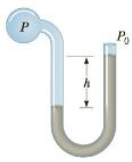ANP 1105 Lecture : Chapter 19 Physiology of Circulation.doc
Document Summary
The volume of blood flowing through a vessel, organ, or the entire circulation in a given period in terms of (ml / min) Blood flow is equivalent to cardiac output (co) Blood flow through individual body organs vary widely and is related to their immediate needs. The force per unit area exerted on a vessel wall by the contained blood. Blood pressure refers to the systemic arterial blood pressure in the largest arteries near the heart. The pressure gradient (the differences in blood pressure within the vascular system) provides the driving force that keeps blood moving from an area of higher pressure to lower pressure in the body. The opposition to flow and is a measure of the amount of friction that blood encounters as it passes through the vessels. Most friction is encountered in the peripheral (systemic) circulation, away from the heart, so it is called peripheral resistance. There are 3 sources of resistance: blood viscosity.


